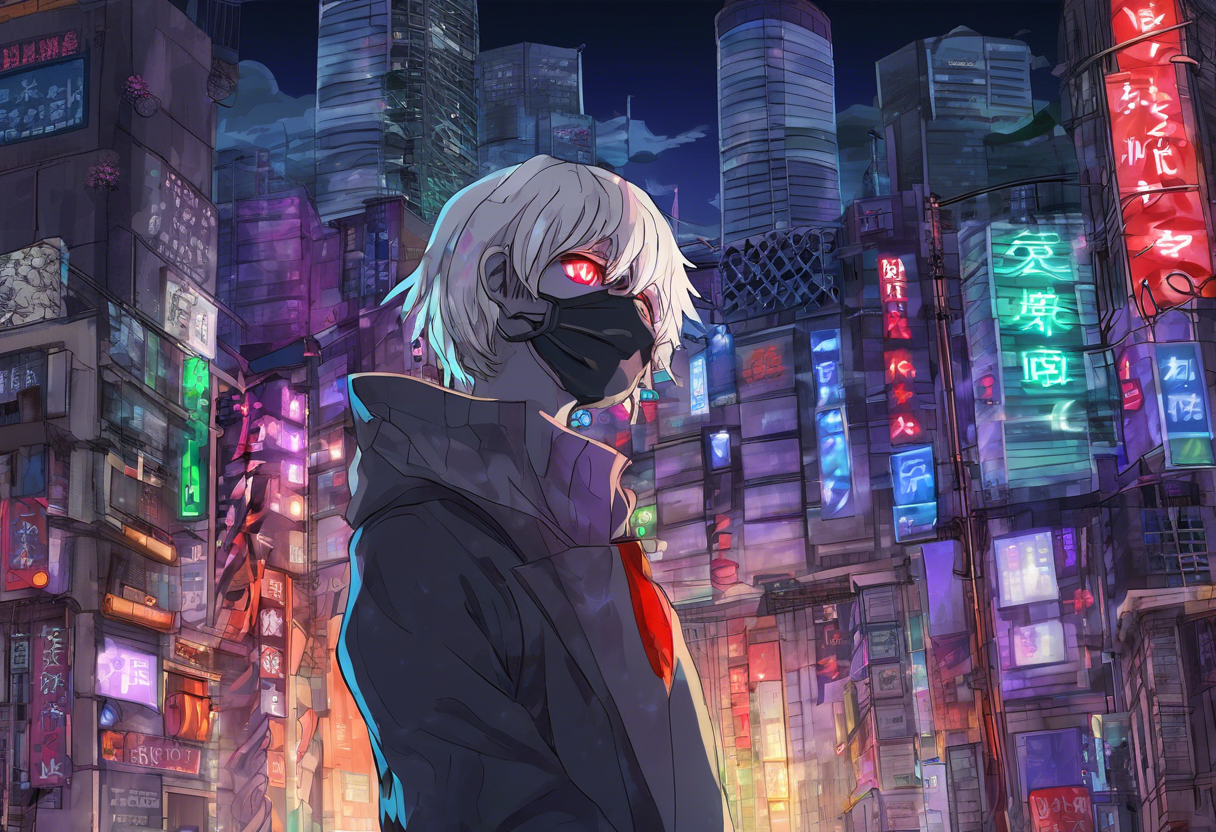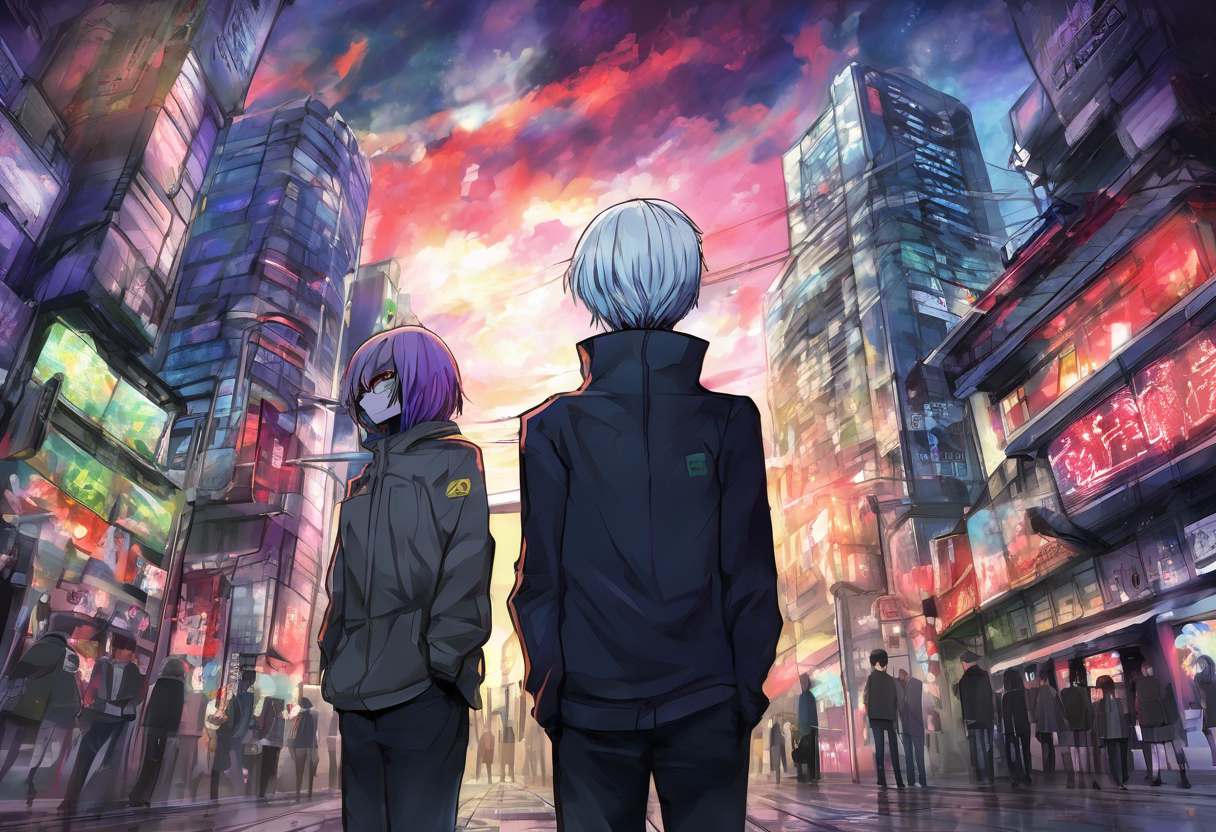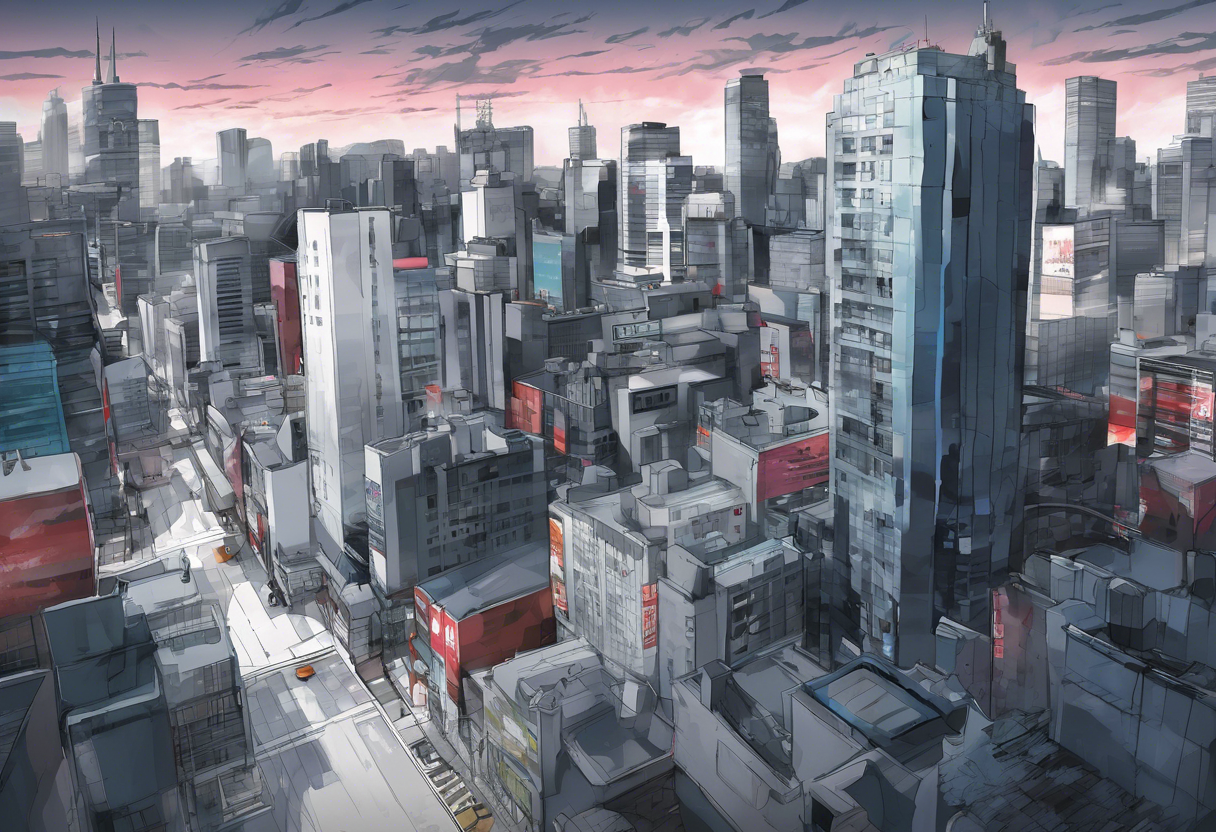Contents
Tokyo Ghoul √A – Episode 21: City in Waiting
Introduction
Tokyo Ghoul √A – Episode 21, titled "City in Waiting," is a pivotal installment in the second season of the anime series Tokyo Ghoul, adapted from Sui Ishida’s manga of the same name. The episode was directed by Shuhei Morita, with the series itself produced by Pierrot and directed by Morita. The screenplay was written by Chūji Mikasano, and the music was composed by Yutaka Yamada. Initially released in 2015, this episode stands out within the anime genre for its intense action sequences, deep character development, and the exploration of themes that resonate deeply with audiences.
Plot Summary
The episode begins with a sense of impending doom as Ken Kaneki and Touka Kirishima watch the news about the 20th Ward under attack by the Commission of Counter Ghoul (CCG). This news prompts Touka to immediately leave her apartment to join the fight, despite Renji Yomo’s attempts to stop her, as he is bound by Yoshimura’s last request to protect her [1][2].
As the CCG launches its operation against the ghouls, the atmosphere is tense and foreboding. Every CCG officer is required to write a testamentary letter before the battle, reflecting the gravity and danger of their mission. Seidou Takizawa, in particular, feels the weight of this task, highlighting the human side of the CCG officers who are about to face a brutal battle [2].
The fight between the ghouls and the CCG officers is intense and chaotic. Enji Koma and Kaya Irimi, leaders of the Hell Monkeys and Black Dogs respectively, welcome the CCG forces and engage them in combat. The battle is marked by the appearance of various powerful ghouls, including the Devil Ape and the Black Dog, who face off against CCG officers like Mougan Tanakamaru and Hachikawa [2][3].
Yoshimura, the enigmatic leader of Anteiku, finally appears and transforms into the One-Eyed Owl, a formidable and legendary ghoul. His arrival turns the tide of the battle, but he is soon confronted by Yukinori Shinohara and Iwao Kuroiwa, who manage to repress him. This confrontation is a critical moment in the episode, showcasing the immense power and the emotional depth of Yoshimura’s character [2].
Meanwhile, Kaneki struggles with his own identity and purpose. He is torn between his loyalty to his friends at Anteiku and his growing involvement with the Aogiri Tree. This internal conflict is exacerbated by the sudden appearance of Shuu Tsukiyama, who attacks Kaneki and raves about eating him, further complicating Kaneki’s emotional state [2].
The episode also delves into the personal stories of other characters. Hide, who has been mortally wounded, reveals to Kaneki that he knew about his ghoul nature after Nishiki’s attack. This moment adds a layer of depth to their friendship and underscores the sacrifices that characters are willing to make for each other [4].
As the battle rages on, the destruction of Anteiku becomes imminent. Kaneki, carrying Hide’s body, walks towards the CCG forces and faces off against Arima in a climactic battle. The outcome of this battle is left uncertain, with Kaneki’s fate hanging in the balance. The episode concludes with a poignant scene of Touka opening a new café, symbolizing a new beginning amidst the chaos and loss [4].
Themes and Symbolism
"City in Waiting" is rich in themes and symbolic elements that enhance its storytelling and resonance. One of the central themes is the struggle for identity and belonging. Kaneki’s internal conflict between his human and ghoul sides is a powerful metaphor for the search for self and acceptance. The episode also explores the theme of sacrifice, as characters like Yoshimura and Hide make ultimate sacrifices for their loved ones, highlighting the depth of their bonds and the moral complexities of their world [2][4].
The symbolism of the One-Eyed Owl is particularly significant. Yoshimura’s transformation into this legendary ghoul represents both his power and his vulnerability. It symbolizes the duality of strength and weakness, and the sacrifices that come with leadership and protection. The CCG’s use of Quinques, weapons made from ghouls, also serves as a symbol of the cycle of violence and the blurred lines between good and evil [2][4].
Cultural Impact
"City in Waiting" had a significant cultural impact upon its release. The episode’s intense action sequences and emotional depth resonated with audiences, making it a standout in the anime community. The episode’s themes of identity, sacrifice, and the struggle between different groups have influenced other anime and manga series, contributing to the broader cultural landscape of Japanese media.
The episode has also been referenced in various forms of media, including fan art, cosplay, and fan fiction. Its influence can be seen in the way it has shaped the perception of ghouls and the CCG in popular culture, often being cited as one of the most memorable and impactful episodes of the series.
Critical Reception
"City in Waiting" received widespread critical acclaim upon its release. Critics praised the episode’s intense action, emotional depth, and the way it balanced multiple plot threads. The character development, particularly of Kaneki and Yoshimura, was highlighted as a strong point, as it added layers to their personalities and motivations.
Audiences also responded positively, noting the episode’s ability to evoke strong emotions and its impactful storytelling. However, some critics pointed out the pacing issues and the complexity of the plot, which could be overwhelming for some viewers.
Legacy
The legacy of "City in Waiting" is profound and enduring. It continues to inspire filmmakers, artists, and audiences with its complex characters, intense action sequences, and deep thematic exploration. The episode’s influence can be seen in many subsequent anime series that have borrowed elements from its storytelling and character development.
As part of the broader Tokyo Ghoul series, "City in Waiting" remains a pivotal moment in the narrative, shaping the course of the story and the characters’ arcs. It stands as a testament to the power of anime to explore complex themes and emotions, and its impact continues to be felt in the anime community.
References
- https://tokyoghoul.fandom.com/wiki/Episode_21
- https://otakubishounen.wordpress.com/2015/03/06/tokyo-ghoul-%E2%88%9Aa-ep-9-city-in-waiting-summary/
- https://www.bubbleblabber.com/2015/04/review-tokyo-ghoul-%E2%88%9Aa-city-in-waiting/
- https://en.wikipedia.org/wiki/Tokyo_Ghoul_%E2%88%9AA
- https://tokyoghoul.fandom.com/wiki/Tokyo_Ghoul_(anime)







